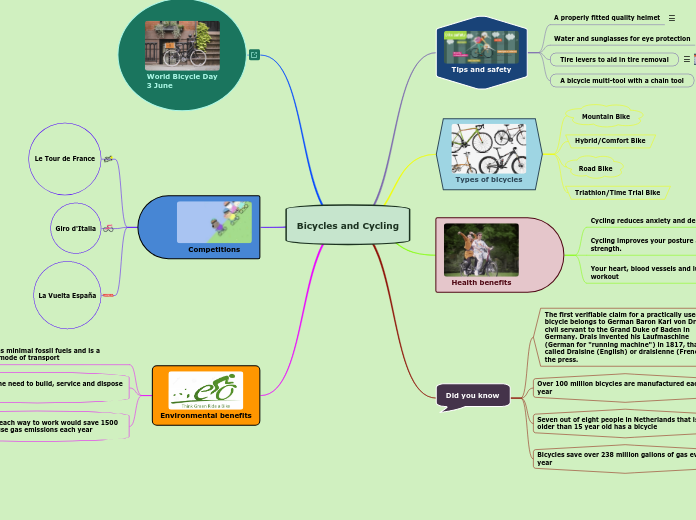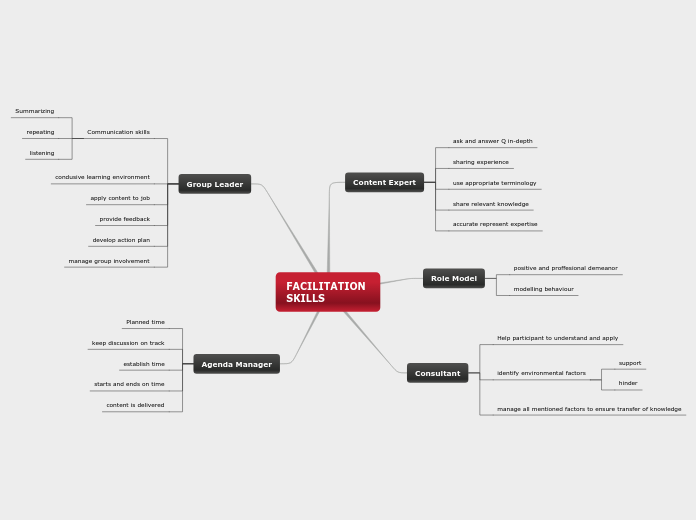Viola Desmond and her act to stand up against racism
David Suzuki spreading work about bettering the environment
Justin Trudeau apologizing for residential schools - accepting reconciliation
Canadian History
By: Daniel Nguyen
1920s
Stock Market Crash
Government
RB Bennett
Lost to King in 1935 election
Last ditch effort – “Bennett’s New Deal”
Changes didn’t help people suffering
Gave relief $ to provinces
Raised tariffs
Promised work for all
Rival to King in 1930 election
William Lyon Mackenzie King (PM 1921-1926) said welfare was the responsibility of the provinces not the Federal government.
Believed the best way to handle the Depression was waiting it out
Insisted social welfare was a provincial, not federal, responsibility
He also said he would not give 5 cents to any province that didn’t have a Liberal government
He was voted out of power in 1930 and replaced with Conservative leader R.B. Bennett – “I will find work for all”
Back in power in 1935
Cause 6: Buying stocks on margin (credit)
Brokers gave loans, but with high interest rates
To buy $1000 worth of stock, you only needed $100 (but you were still responsible for the other $900, and counted on profit to cover it)
Cause 5: Credit purchases
Drove many into bankruptcy
People couldn’t keep up with payments when sick or out of work
“Buy now, pay later” more popular
Cause 4: Problems with tariffs & trade
Result = slowed world trade
Protective tariffs = taxes countries put on imports to protect their own goods
Cause 3: Dependence on the USA
Relied on USA for imports and exports
Depression hit the US before Canada
Cause 2: Dependence on a few primary products
This hurt areas where those products were the main sources of income
Once the demand for staples sank, so too did our prosperity
Canada's staple products: fish, minerals, wheat, pulp & paper
Cause 1: Over-production and over-expansion
Stock piled up, production slowed, workers ended up being laid off
Market became saturated, people stopped buying
Business was booming after WWI
"Black Tuesday"
Mass panic & financial devastation
Was not a cause, but rather a symptom of the depression
The day the stock market crashed
October 29, 1929
Social Changes
Role of Women
Person’s case – when the first female judge, (Emily Murphy) was turned down for a Senate seat because she is not a “person” in the BNA Act.
Emily Murphy, Irene Parlby, Nellie McClung, Henrietta Muir Edwards, Louise McKinney
Famous Five signed a petition (1927) and the Privy council of Britian (1929) stated women were persons too.
1921 Agnes Macphail was the first person to be elected to Parliament.
Black People
Black people could vote but had separate school boards and were underfunded.
Chinese Exclusion Act (1923)
Chinese Head Tax
$500/person had been applied up to this point.
Limited new Chinese immigrants including family of those already here. (Main labour for railway)
Asians couldn’t vote, hold certain jobs and were paid lower wages
Immigration Act 1919
Preferred list. Those who had “peculiar” customs, language and habits were undesirable – seen as difficult to assimilate
1. White, English speaking Britons and Americans
4. Asians, Blacks, Gypsies and Jews
3. Central and Eastern Europeans
2. Northern Europeans
1919, 20% of the population were immigrants
Whites from Britain, US and Europe encouraged to immigrate.
Pull Factors – conditions that explain why immigrants choose a country.
Opportunity, land, community already established in Canada, jobs
Push Factors – conditions that pushed people to come to Canada.
War, poverty, famine, no jobs
Social Problems
Employees still worked long hours for low wages and dirty and unsafe conditions
Gap between rich and poor remained large
Social Attitudes
Fashion Forward
Cartoons
was about to start
warn that the feature
Used at the movies to
Steamboat Willie- 1928
Plane Crazy- 1927
Flappers
Flapper – fashionable young women who defied the old conventions of proper “feminine” behaviour.
Economic Boom
Other countries investing money into Canadian resources and industries, (U.S. major investor)
Millions spent on Hydroelectricity
Sale of minerals, pulp and paper, oil in Alberta
Prohibition
Between 1915 and 1917, every province except Quebec outlawed the sale and consumption of alcohol
In 1918, Prime Minister Borden incorporated prohibition into Canada’s war effort
Distillers’ and brewer’ ingredients were needed to feed the troops
Rumrunners Blind Pigs, Bootleggers
illegal methods of selling alcohol
Women’s Temperance Union
Lobbied to ban gambling, drinking, theatre attendance, and public dancing
Why?
Prohibition did reduce alcohol consumption by about 80 percent
Prohibition was unpopular with the voters; besides, governments could raise money by controlling and taxing the sale of liquor
Second, if the world was to be a better place after the war, prohibiting alcohol was seen as one way to achieve it!
First, during the war, using food to produce alcohol for simple consumption was regarded as wasteful
Prohibition in Canada was firmly rooted in the First World War!
Labour Unrest
Work Setting
Terrible conditions
Rich and Poor
Major difference in quality of life
Job Shortage
Extremely high unemployement rates after the war
The Roaring Twenties
Sports
Changes to women’s sports
Post WWI – basketball (Edmonton Grads), contact sports
Prior to WWI – tennis, skating, cycling, fencing
Hockey
Famous Canadian announcer Foster Hewitt – “He shoots, he scores!”
Lionel Conacher: wrestler, boxer, hockey, football, lacrosse, baseball player and trophy winner
Percy Williams: runner, Olympic gold winner
Visual Arts
The Group of Seven
Impressions of the Canadian landscape
Bold, fresh, interpretive, deep colours, vivid light, shade.
Canada’s physical beauty was encapsulated through the work
Realistic landscape paintings
J.E.H. Mac Donald, Lawren Harris, Franklin Carmichael, Arthur Lismer, F.H. Varley, A.Y. Jackson, Franz Johnston
Entertainment
Talkies
Canadian star: Mary Pickford
Formed United Artists with Fairbanks & Griffith
Major stars: Charlie Chaplin, Rudolph Valentino, Douglas Fairbanks
900 movies houses in Canada by 1930
Arrived in Canada in 1927
Movie stars
Louise Brooks
Greta Garbo
Clark Gable
Music
Duke Ellington
Jazz
Dances
Shimmy
Tango
Charleston
Technology Improvements
Automobiles – big thanks to Henry Ford!
Sources for news, music and entertainment
Brought Canadians closer together
Radio
Post War Problems
Unions & labour unrest
Winnipeg General Strike
Women’s rights
Persons Case
Influenza – Spanish flu
Prohibition
Women’s Christian Temperance Union
Rumrunners & bootleggers
1930s
Prairies
Arrived in 1931
deep-rooted prairie grasses were gone
Soil blew off fields and farm land was destroyed
Widespread losses of jobs and savings transformed the country
the value of wheat was greatly reduced in the global export market
Agriculture Damage
-Canada’s dependence on raw material and farm exports
Drought had ruined agriculture and kill all farmer's crops
Lack of food and suopply
Pricing for goods skyrocketed
Effects
Families were in shambles as people tried finding jobs
People had starved to death
Millions of Canadians were left unemployed, hungry and often homeless
Indigenous People
Indian Act
Assimilation
Created generations of social and cultural disruptions
Has allowed trauma and numerous human rights violations to be perpetrated against Canada’s Indigenous people
Attempted to destroy Indigenous culture in favour of assimilation
Restrictions
Forced enfranchisement for attending University
Reserve land could leased out by the government
Denied women status
Forced Residential Schooling
Can’t leave the reservation without permission slip from the Indian Agent
Can’t form political organizations
Can’t raise money for land claims
Imposed Band council system
Given European names
Government can confiscate portions of reserves
Can’t enter a pool hall
Can’t speak native tongue
Can’t practice traditional religion
Can’t appear in public in traditional clothing
Cultural ceremonies and dancing are banned; ceremonial objects taken
Denied the right to vote
Significance
Gave Office of Indian Affairs had greater authority to make sweeping policy changes
act creates laws that controls Indigenous people
Truth and Reconciliation
The Truth and Reconciliation Commission
Encourage those affected to tell their story
Honour the experiences of former students and their families
Hosted national events to spread information and inform students
Provided about $72 million to support the TRC's work
Indian Residential Schools Settlement Agreement
Accepted by the Prime Minister
the largest class-action settlement in Canadian history, began to be implemented in 2007
94 Calls to Action
Reconciliation
Missing Children and Burial Information
Museums and Archives
Youth Programs
National Council
Equality for Aboriginal People in the Legal System
Royal Proclamation and Covenant of Reconciliation
Declaration on the rights of Indigenous people
Legacy
Justice
Language and Culture
Health
Education
Child Welfare
To redress the legacy of residential schools and advance in the process of Canadian Reconciliation
MMIW
Reports/Government Involvement
Write local, provincial and national authorities
Challenge media presentations
Share the missing persons ALERTS
The RCMP Commissioner Bob Paulson has said “"We are making sure that unsolved cases are reviewed systematically and peer reviewed for avenues of investigation that perhaps have not been seen."
The vision of the RCMP is to promote safe communities in their commitment to preserve the peace, uphold the law and provide quality service
Native Women’s Association of Canada (NWAC)
Indigenous women only make up 3% of female population
Aboriginal women and girls represented approximately 10% of all female homicides in Canada.
Possible Causes
presumed dead
unknown
runaway
parental abduction — no custody order
parental abduction with a custody order
wandered off/lost
accident
abduction by a stranger
total 1,181 - 164 missing and 1,017 homicide victims.
There were 1,017 Aboriginal female victims of homicide (between 1980 & 2012)
The rate of victimization among Aboriginal females was close to three times higher than that of non-Aboriginal females
67,000 Aboriginal females reported being a victim of violence in 2009
Females represented 32% of homicide victims
Conditions
Supervisors were cruel
Sexually harassed and assualted children
Children were left with scars and life long trauma
NO communication allowed
12 hours a day in class, 6 days a week
Beaten if you spoke any language other than English
Put children with different languages together
Department of Indian Affairs “kidnapped” ALL Native kids
Did not have the right to embrace their own culture
Indigenous people were taught farming techniques and math
Religion was in charge of the schools
1920s-1990s
Lots of suicide
Physical, sexual and emotional abuse
Not much running water
Disease
Fire traps (only 1 hallway)
No heat or ventilation
Under-funded
Handed down clothing with holes, etc.
Bad, rotten, not nutritional food
Over populated classrooms
Poor building condition (shack)
Extreme, excessive punishment
Odour from raw sewage
a child who tried to escape could be arrested without a warrant and sent to the school
as a parent you could be fined or imprisoned for not sending your children to residential school
an officer was enforced attendance; he had the right to enter anywhere he thought there were children
7 to 15 year olds must attend residential school
Reasoning
The Indigenous people and their needs aren’t as important as the settler’s (colonizer’s) needs
They thought their government or religion either didn’t exist or wasn’t as good as theirs
Colonialism
According to the French, Indigenous people don’t have the right to control the land
Controlling the Indigenous people land for their own use
A group of settlers to a place and set up control over the people there
1980-Present
Discrimination
Baltej Singh Dhillion Incident
Montreal Massacre
Immigration
Housing Crisis
1981
Alberta Oil Boom
1970s
Law and
Legislatures
Free Trade 1988 Elections
1988
Meech Lake Accord
Elizabeth May
1998
Women in Charter
1980-1982
Trudeau and The Constitution
April 17 1982
Inglis Factory Strike
1983
Trudeau’s Speech
Referendum
Indigenous
Oka Crisis
Berger Inquiry
1970s-1980s
South Moresby, BC
Technology
New Entrepreneurs
1980s-1990s
Computer Moves in
1980s
Charter of Rights and Freedoms
Extremely Important as it outlined the rights and rules the government must follow and operate accordingly
Official Language Rights
Equality Rights
Legal Rights
Minority Language Education Rights
Mobility Rights
Democratic Rights
Fundemental Freedoms
Canadian Bill of Rights
Carousel Movements
Environmental Movement
Canadian Contributions
David Suzuki
Environmental Policies
Indigenous Peoples
Ongoing Issues
MMIW&G
Residential Schools
Feminist Movement
1960s
Contributions to the War Efforts
Suffragettes
The Famous Five
The Persons Case 1929
Black Canadians
BLM Movements
Viola Desmond
Africville
2SLGBTQIA
Acronyms
RCMP and the 1960’s
Canada’s response to Stonewall Riots (NYC)
Toronto Raids (1980’s)
WWII
On May 8, 1945, World War II in Europe came to an end
Later that year, US President Harry S. Truman announced Japan’s surrender and the end of World War II
V-E Day
Major Impacts
Need for workers and economic started to boom
Nations needed to rebuild and replenish what was lost
Scarce resources
Many people left homeless
19–28 million deaths from war-related disease and famine
Deaths directly caused by the war (including military and civilian fatalities) were around 50 million
70–85 million people perished
The Nuremberg Trials
Permanent international criminal court
Stop to Crimes Against Humanity
Humanity would be guarded by an international legal shield
Prosecution of prominent members of the political, military, and economic leadership of the defeated Nazi Germany
A series of military tribunals, held by the victorious Allied forces of World War II
Holocaust
Stages
3rd and final stage or "solution" – You cannot live at all (extermination)
Concentration Camp
6 million killed + millions of other enemies
Killed by gas in showers or burned in ovens
Two types of camps: work & death
“Final Solution” – outright extermination of all Jews
“Solutions" = sterilization, death
2nd stage – You cannot live among us at all (concentration/segregation)
Registration card in Warsaw Ghetto
Allows for 300 calories a day
Top half gives personal details
Bottom half records death in Ghetto
1st stage – You cannot live among us as Jews (discrimination/identification)
Badges and armbands used for identification
Nazi targets: Jews, homosexuals, criminals, weak, insane, degenerates
Belief that improvements can be made to the human race by discouraging reproduction of people with undesirable qualities or defects
Holocaust: systematic destruction of European Jews by Nazis during WWII
Propaganda
Hitler Youth for after-school activities
Classes in “race hygiene”
Nationalistic approach to history
After Nuremberg Laws, Jews not allowed to attend schools
Propaganda of Allies
Influenced people to buy war funds and support the nation in multiple ways
Showed strength of women
demonstrated strength of allied nations
Motivated all individuals to join the army and serve their nation
Shared hate towards Hitler and Germany
Nazi Propaganda
Germany: Ministry of Enlightenment & Propaganda
Arts and culture were controlled
literature
film
music
Radios, broadcasting
Led by Joseph Goebbels
Master at manipulating
Strategies
Direct Order- Appeals to people’s desire to be told what to do
Patriotism/ National Pride- appealing to people’s love of their nation
Card Stacking- strongly promoting the positive while avoiding any possible negatives
Glittering Generalities- uses broad general positive words
Bandwagon- peer pressure
Name Calling- using put down words for a group or nation (often racist/ stereotypes)
sponsored by governments and political groups
Spread a philosophy or point of view
Total War
Every facet of the nation was involved in the war effort
Industries
Natural Resources
Soldiers
Civilians
War Time Prices, rationing in Canada
Ipperwash
By 1994, First Nations people occupied Ipperwash Provincial Park
Canadian Gov’t refused to leave in 1945 when the Assembly of First Nations undertook steps to regain the reserve
Received $50,000
WWII- Canadian Army evacuated it in order to set up temporary military training camp
Chippewas shared 6 million hectares of land with Euro. Settlers 1818-1827
Conscription
Selective Training and Service Act of 1940, which required all men between the ages of 21 and 45 to register for the draft
Motivated men to go to war
Camp X
Opened just after Pearl Harbor (Dec., 1941)
For Americans and Canadians too
Trained French, and Yugoslav agents in sabotage
For the British Secret Intelligence Service
War time spy training camp
False documents, & costumes, and other personal items to ensure secret agents are never suspected as with the Allies
“Special Training School #103”
Under-cover work in Nazi occupied France
Dictators
Japanese Emperor Hirohito
Add text
Arrested & tried as a war criminal; executed by hanging
Believed in the racial superiority of the Japanese over the Chinese
Alliance with Nazi Germany and Fascist Italy
Benito Mussolini
Was shot, body dumped in public square, then hung up on a meat hook on display
Declared war on Britain in 1940 (part of Axis)
Goal was to fight communism and democratic socialism
Hitler
Why they liked him
Wanted to expand to the East
Belief that Germany needed to expand – land & raw materials – for survival
Charismatic speaker
Wanted affordable cars for people – helped with the VW Beetle
Liked the arts & sponsored architecture projects
Improved infrastructure of Germany
Why he hated Jews
Believed they were connected to Communists
Believed they were lazy and contributed little in world development
They did not fit into his “master race”- Aryan
Blamed them for Austria’s problems
Nazi Party becomes only legal political party
1933 – Becomes Chancellor
Became Fuhrer of the National Socialist German Worker’s Party (Nazi Party) in 1921
Became a member of the German Worker’s Party (DAP) in 1919, but left in 1921
Led the Nazi movement
Was a WWI Soldier
Britain
British radar system
Bomber raid on Berlin in retaliation
43 000 perished
Involved Canadian pilots (RCAF)
September 9th, 1939- Canada declares war (Allied forces of Britain and France) 🡪 1937 warning
France
Dunkirk
Historical significance: Brits came to rely on Canadians for naval support (convoys)
340,000 British and French soldiers are rescued from Dunkirk
French troops were overwhelmed by swift German forces, losing many battles
France surrendered on June 22nd, 1940
September 3rd, 1939- France and Britain declare war on Germany
Poland
September 17, 1939- Russia invades Poland (east)
September 1st, 1939- Nazis invade Poland- over 1 million soldiers
Blitzkreig- intense military attack (Luftwaffe, panzers, and Whermacht)
Economic Depression
The Great Depression
people looked for a strong political leader to resolve problems
unemployment rates rise
prices and banks fall
Businesses close
Trades reduced
The Treaty of Versailles
Germany to accept guilt for the war and pay reparations
German land and resources limited, caused Nazi movement
Germany
Allies with Italy and Japan
Hitler building up Germany's army and weapons
Germany were hungry for power
wanted land and power
WWI
Results
Remembrance Day
Every year in Canada to remember the people who died for our country
November 11th is also called Armistice Day- the day the fighting stopped
At 5 a.m. that morning, Germany, with little manpower and supplies and faced with imminent invasion, signed an armistice agreement with the Allies in a railroad car outside Compiégne, France
At the 11th hour on the 11th day of the 11th month of 1918, the Great War ends
Treaties
The Treaty of Versailles (1919)
German anger led to Nazi movement
100 000 max in army
Navy reduced in size,
Rhineland put under Allied control
Germany ordered to take responsibility and pay reparations
“League of Nations” formed to settle future disputes
Statistics
9 million animals: horses, donkeys, etc.,
Casualties: around 40 million
At least five million civilians died from disease, starvation, or exposure
Germany, Russia, Austria-Hungary, France, and Great Britain each losing nearly a million or more lives
The First World War left nine million soldiers dead and 21 million wounded
Battles
Turning Points
1917: Event 3-Communist Revolution
Zimmerman Telegram
1917: Event 2: Zimmerman Telegram
1917: Event 1: “Unrestricted U-boat” attacks
Italy sees a turning point in 1915
Outcome is significantly altered
Observable moment when there occurs a dramatic change in direction in events
Tactics
War in the Air and in Sea
Cut off resources from being recieved by enemies
British depended on the sea and Germans knew this
Germans had a deadly weapon - submarines
German submarine sank the Lusitania, a British liner in 1915, killing over 1198 people including 128 Americans (U.S. joins war in 1917)
Sopwith Camel - Britain
Zeppelins: Bombs and Surveillance
used to oberserve enemy troops
average lifespan of piolt was 3 weeks
Airel duals
no parachutes
Trench Warfare
Very little resources
Halted by the French, they dug defensive fortifications on high ground
along a long "front" from Belgium to Switerzerland
Consequences
The horrors of the battlefield were bad enough and soldiers had to endure terrible hardships just to live day to day
Trench Foot
Resulted in a "tie"
Niether side could gain territory
Defense stronger than offense
Propaganda used to spread false information
Motivated people to join the army
Schlieffen Plan
Attack both France and Russia
"back door" on France through Belgium
plan failed
Defeat them while they struggled to form their army
Homefront
Halifax Explosion
6 December 1917 - Mont-Blanc collided with the Belgian relief ship Imo
Ended with huge explosion
Mont-Blanc's crew abandoned ship
Fire started
Boat traffic control
Royal Canadian Navy
Royal Navy
Civilians
Frequent collisions between ships
Halifax was the largest city in Atlantic Canada
Ship sailed to and from Great Britain carrying war supplies
By 1917, three years of war made Halifax a boomtown
Conscription Crisis
In the first two years of the war, over 350,000 Canadians had enlisted.
The Military Services Act 1917
Had exceptions
Called all fit males 18-45 to register
Opposed by farmers, Quebec
Initial enthusiasm fading, some soldiers returned home with stories
Women's Role
Wages
Wages allowed independence for some women.
Paid lower rates than men
Many women were paid good wages
What did they do?
More than 50,000 women served during the two World Wars
Women Organizations
On the Farm
Overseas jobs- nurses
Aircraft factories, machine shops, metal foundries, shipyards
30 000 women worked in “munitions” factories
Jobs had to be given back to those men returning from the military
Trade Union decree that women would only be employed for the duration of the war
Women employed to replace men in many sectors of the economy
Before the Wwar
Office work
Nursing
Teaching
Domestic servant
Paying for The War
Victory bonds
government promised to pay back
a bond is a loan
Had to borrow and raise taxes
Overcame the government's ability to pay
The war costed $1,000,000 dollars a day by 1917
War Measure Act
Helped maintain security and order during war times
Gave strong power to prime ministers
The government created the act
Causes
Nationalism
Major Nations
Italy: Recently unified as a country; looking to prove itself
Germany: Navy rivaled Britain; “natural leaders of Europe”
Austria-Hungary: Large empire, strong army, “natural leaders of Europe”
Russia: Big (land)
France: History of "Greatness"
Britain: large navy, empire
"Black Hand” - Serbian terrorist group
Serbians in Austria-Hungary and Serbia wanted to reunite Bosnia with Serbia
Great loyalty to one's homeland
Can lead to feelings of superiority.
Imperialism
The Austrians feared Serbia (allies with Russia)
Serbia feared Austria (terrorism)
The British feared Germany in Africa
Germany jelous of Britain
Britain’s Colonial Possessions - 25% of globe
Land = Power
Big nations competing for land and resources
Alliances
Major Allies
Triple Alliance (Central Powers) - Germany, Austria-Hungary and Italy
Triple Entente (The Allies) - France, Britain and Russia
Alliances increased change of war starting and continuing
By 1914, major powers were allied with each other
Countries uniting together againsts a common threat
Militarism
Germany was competing with Russia and France to expand armed forces
British feared an attack from other nations
Germany competing with the UK to build battle ships
The building up of arms to intimidate other nations









